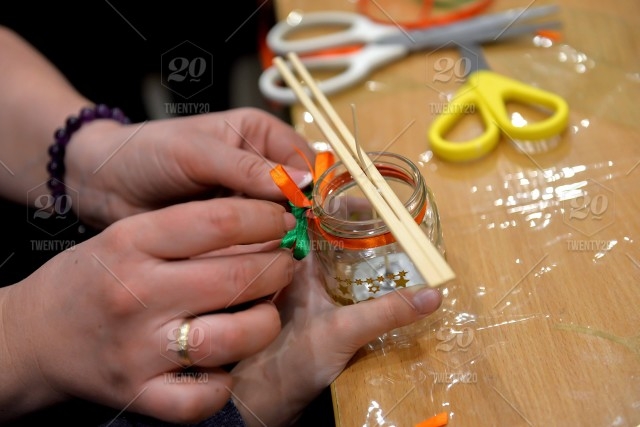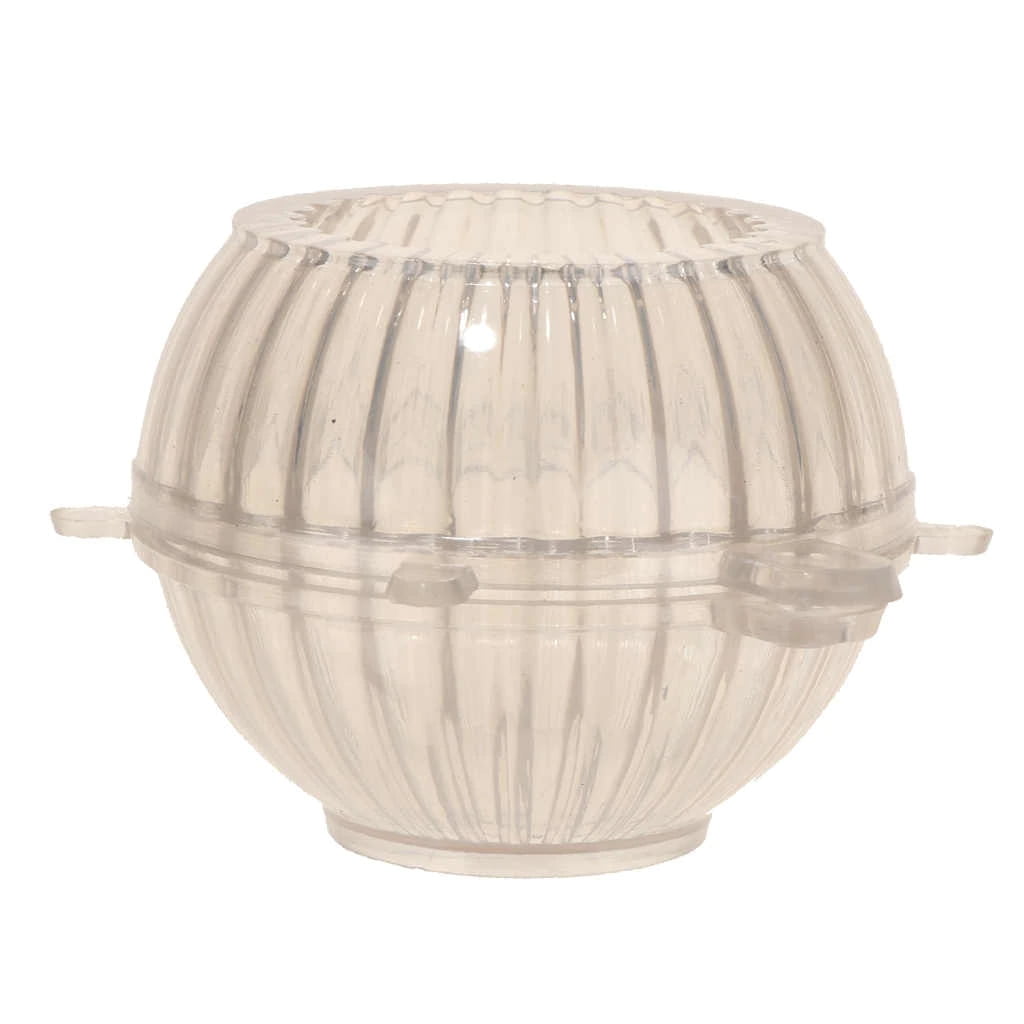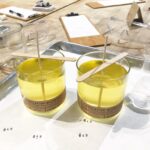Flashpoint is a crucial factor to consider in the art of beeswax candle making. This key element determines the temperature at which the beeswax will ignite and sustain combustion, making it essential to understand its significance in creating safe and efficient candles. Beeswax, known for its natural and sustainable properties, has a specific flashpoint that must be carefully managed during the candle-making process.
In the context of beeswax candle making, flashpoint refers to the temperature at which the beeswax releases flammable vapors that can be ignited with an external flame. It plays a vital role in ensuring that the candle burns evenly and safely while emitting a pleasant aroma. By understanding and controlling the flashpoint of beeswax, candle makers can enhance the quality and performance of their products.
Several factors influence the flashpoint of beeswax, including its purity, age, and processing method. Choosing the right flashpoint is crucial in achieving desired burning characteristics such as longevity, scent throw, and color stability. Candle makers can test the flashpoint by using simple methods like heating samples gradually until they observe flammable vapor release or ignition. However, it is important to exercise caution when working with high flashpoint beeswax to prevent any potential safety hazards during the production process.
Importance of Flashpoint in Beeswax Candle Making
Flashpoint is a crucial factor to consider in beeswax candle making, as it determines the safety and quality of the final product. The flashpoint for beeswax candle making refers to the temperature at which the wax gives off vapors that can ignite when exposed to a flame. Understanding this concept is essential for ensuring the proper handling and use of beeswax in candle making processes.
Maintaining the correct flashpoint in beeswax candles is vital for several reasons. Firstly, it ensures that the candles burn safely and efficiently without excessive smoking or sooting. A higher flashpoint indicates a more stable wax that is less likely to evaporate quickly when exposed to heat, resulting in a cleaner and longer-lasting burn. Additionally, controlling the flashpoint allows candle makers to achieve their desired fragrance throw and color intensity, enhancing the overall aesthetic appeal of the candles.
Factors such as the purity of beeswax, any additives used, and even environmental conditions can influence the flashpoint of beeswax. It is essential to consider these variables when selecting beeswax for candle making purposes to achieve consistent results. By understanding how these factors impact flashpoint, candle makers can make informed decisions on adjusting their techniques or formulations to meet their specific requirements.
| Factors Influencing Flashpoint | Impact |
|---|---|
| Purity of Beeswax | Determines stability and safety during burning process. |
| Additives Used | Affects volatility and combustion properties of beeswax. |
| Environmental Conditions | Can alter wax consistency and behavior under heat exposure. |
Definition of Flashpoint in the Context of Beeswax Candle Making
Understanding Flashpoint in Beeswax Candle Making
In the context of beeswax candle making, the flashpoint refers to the temperature at which the wax emits flammable vapors that can ignite when exposed to a flame or spark. This is a crucial factor to consider, as working with beeswax requires heating it to specific temperatures to achieve the desired consistency for candle making. Understanding the flashpoint of beeswax helps ensure safety during the crafting process.
Importance of Flashpoint in Beeswax Candle Making
The flashpoint in beeswax candle making is important because it determines the safe handling and melting of the wax. By knowing the flashpoint of beeswax, candle makers can prevent accidental fires or burns while working with this natural material. Additionally, understanding the flashpoint allows artisans to choose appropriate heating methods and equipment for melting beeswax without compromising its quality or properties.
Factors Influencing the Flashpoint of Beeswax
Several factors can influence the flashpoint of beeswax, including impurities in the wax, additives used in candle making, and external environmental conditions. It is essential to source high-quality, pure beeswax with a consistent composition to maintain a stable flashpoint for safe and efficient candle production. Additionally, avoiding contaminants and following proper storage practices can help preserve the integrity of beeswax and prevent fluctuations in its flashpoint over time.
Factors Influencing the Flashpoint of Beeswax
The flashpoint of beeswax, a crucial factor in candle making, can be influenced by various elements. One significant factor is the purity of the beeswax used. Beeswax that is clean and free from impurities tends to have a higher flashpoint compared to lower quality beeswax. The processing method also plays a role in determining the flashpoint. Refined beeswax typically has a higher flashpoint than unrefined beeswax due to the removal of excess debris and contaminants.
Additionally, the color of beeswax can affect its flashpoint. Darker-colored beeswax, which may contain more natural compounds and impurities, could have a slightly lower flashpoint than lighter-colored beeswax. The age of the beeswax could also impact its flashpoint. Older beeswax might have a lower flashpoint compared to freshly harvested beeswax due to potential oxidation over time.
Furthermore, additives such as fragrances or dyes can influence the flashpoint of beeswax candles. Some additives may lower the overall flashpoint of the wax mixture, making it important to carefully consider the compatibility and proportions of any additional ingredients when aiming for a specific flashpoint in candle making.
| Factors | Influence |
|---|---|
| Purity of Beeswax | Determines if it has high or low flashpoint |
| Processing Method | Refined wax usually has higher flashpoint than unrefined wax |
| Color | Darker wax may have lower flashpoint than lighter wax |
Choosing the Right Flashpoint for Beeswax Candle Making
Understanding the Role of Flashpoint in Beeswax Candle Making
Flashpoint plays a crucial role in the process of making beeswax candles. It is defined as the temperature at which a wax or any other substance can ignite when exposed to an open flame.
In beeswax candle making, understanding and controlling the flashpoint is essential for ensuring safety during the manufacturing process and determining the quality of the final product. By selecting the right flashpoint for beeswax, candle makers can create candles that burn efficiently, last longer, and emit a pleasant fragrance.
Factors Influencing the Flashpoint of Beeswax
Several factors can influence the flashpoint of beeswax, including its purity, melting point, and additives used in the manufacturing process. Beeswax with higher levels of impurities may have a lower flashpoint, making it more flammable and difficult to work with.
On the other hand, purer beeswax typically has a higher flashpoint, which makes it safer to handle during candle making. Additionally, adding fragrances or dyes to beeswax can affect its flashpoint, so it is important to consider these factors when choosing the right type of beeswax for candle making.
Choosing the Right Flashpoint for Your Beeswax Candles
When selecting the right flashpoint for your beeswax candles, it is important to consider your specific needs and preferences as a candle maker. If you are looking to create highly-scented candles with vibrant colors, you may opt for a lower flashpoint beeswax that allows for easier blending of fragrances and dyes.
However, if safety is your top priority or if you are aiming to produce long-lasting candles with minimal smoke and soot emissions, then choosing a high flashpoint beeswax would be more suitable. Ultimately, finding the perfect balance between safety and performance will help you achieve optimal results in your beeswax candle making endeavors.
Tips for Testing the Flashpoint of Beeswax
Testing the flashpoint of beeswax is an essential step in ensuring the safety and quality of your candle-making process. The flashpoint refers to the temperature at which a substance can ignite when exposed to an open flame or heat source.
For beeswax, having a higher flashpoint is crucial as it indicates that the material is less likely to catch fire during the candle-making process. Here are some tips on how to effectively test the flashpoint of beeswax:
- Choose a well-ventilated area: Before testing the flashpoint of beeswax, make sure you are in a well-ventilated space to minimize the risk of inhaling fumes or vapors.
- Use a reliable thermometer: Invest in a high-quality thermometer specifically designed for testing flashpoints to ensure accurate readings.
- Follow proper heating methods: Heat a small sample of beeswax gradually in a heat-resistant container using a controlled heat source such as a hot plate or burner.
It is important to note that different types of beeswax may have varying flashpoints due to factors such as purity, processing methods, and additives used. By conducting regular tests on your beeswax samples, you can determine the optimal temperature range for safe and effective candle making.
- Observe the sample closely: Pay attention to any changes in appearance, odor, or smoke production during the heating process as these can indicate approaching the flashpoint.
- Record your findings: Keep detailed records of your testing methods, observations, and results to track any variations in flashpoints between batches of beeswax.
- Seek professional guidance: If you are unsure about how to test the flashpoint of beeswax or interpret your results, consult with experienced candle makers or industry experts for guidance.
By incorporating these tips into your candle-making routine, you can confidently determine and control the flashpoint of beeswax for safer and more efficient production. Remember that proper testing and monitoring are key elements in maximizing the potential of beeswax candle making while ensuring product quality and safety.
Safety Precautions When Working With High Flashpoint Beeswax
Working with high flashpoint beeswax in candle making requires careful attention to safety precautions to ensure a safe and enjoyable crafting experience. Here are some essential guidelines to follow:
- Wear appropriate protective gear, such as gloves and goggles, when handling beeswax with a high flashpoint. This will protect your skin from potential burns and irritations.
- Work in a well-ventilated area to avoid inhaling fumes from the melting beeswax. Proper ventilation will help reduce the risk of respiratory issues associated with prolonged exposure to wax vapors.
- Avoid over-heating beeswax beyond its recommended temperature range, as this can increase the risk of fire hazards. Use a double boiler or a dedicated wax melting pot to ensure even heating and prevent overheating.
In addition to these precautions, it is crucial to be mindful of the surroundings when working with high flashpoint beeswax. Here are some more safety measures to consider:
- Keep flammable materials away from the work area to minimize the risk of accidental fires. This includes paper, fabric, and other combustible items that could ignite when exposed to heat.
- Never leave melting beeswax unattended on the heat source. Always stay present during the melting process to monitor the temperature and prevent any potential accidents or spills.
- Have a fire extinguisher nearby as an extra precaution in case of emergencies. Being prepared for unexpected situations can help mitigate risks and ensure a safe workspace for candle making.
By following these safety precautions when working with high flashpoint beeswax, you can create beautiful candles without compromising your well-being or the safety of your environment. Remember that prioritizing safety is key to enjoying the art of candle making while minimizing risks associated with handling beeswax at elevated temperatures.
Common Mistakes to Avoid When Determining Flashpoint for Beeswax Candles
When it comes to determining the flashpoint for beeswax candles, there are some common mistakes that many candle makers make. One of the most significant errors is not understanding the importance of flashpoint in beeswax candle making. The flashpoint is the temperature at which a substance can ignite or produce a flammable vapor. In beeswax candle making, knowing the flashpoint is crucial as it determines the safety and quality of the final product.
Another mistake to avoid when determining the flashpoint for beeswax candles is choosing the wrong type of beeswax. Different types of beeswax have different flashpoints, so it’s essential to select the right one for your specific candle-making needs. Beeswax with a higher flashpoint is ideal for making candles that burn longer and more steadily, while lower flashpoint wax may result in faster-burning candles with less stability.
Additionally, failing to conduct proper testing to determine the flashpoint of your beeswax can lead to inaccurate results and pose safety risks during the candle-making process. It’s crucial to follow reliable testing methods and ensure accurate measurements to avoid any potential hazards. By taking these precautions and avoiding common mistakes, you can effectively determine the correct flashpoint for your beeswax candles and create high-quality products that are both safe and efficient.
Conclusion
In conclusion, understanding and controlling the flashpoint for beeswax candle making is crucial to maximize the potential of this craft. The flashpoint not only determines the safety of handling beeswax during the candle-making process but also affects the quality and performance of the final product. By selecting the right flashpoint for beeswax candles, artisans can ensure that their creations burn cleanly, evenly, and with a pleasant aroma.
Factors such as purity of beeswax, additives used, and external conditions can influence the flashpoint of beeswax. Therefore, it is essential for candle makers to pay close attention to these factors when determining the appropriate flashpoint for their specific needs. Through proper testing and precautionary measures, individuals can avoid common mistakes that may arise while working with high-flashpoint beeswax.
By adhering to safety precautions and best practices in determining and maintaining an optimal flashpoint for beeswax candle making, artisans can unlock the full potential of this versatile material. With careful consideration of these key aspects, candle makers can elevate their craft, produce high-quality candles, and delight customers with products that not only look beautiful but also burn efficiently and safely. Embracing proper flashpoint control is essential in creating successful and fulfilling experiences in beeswax candle making.
Frequently Asked Questions
What Is the Best Temperature to Pour Beeswax Candles?
The best temperature to pour beeswax candles is usually around 140 to 160 degrees Fahrenheit. This range allows the melted beeswax to cool and solidify properly without causing structural issues or imperfections in the final candle.
What Is the Flashpoint of Wax for Candles?
The flashpoint of wax for candles varies depending on the type of wax being used. For soy wax, the flashpoint is typically around 185 to 200 degrees Fahrenheit, while paraffin wax has a lower flashpoint of about 130 to 150 degrees Fahrenheit. It is crucial to be aware of these flashpoints for safety reasons during the candle-making process.
What Is the Temperature of a Beeswax Candle Flame?
The temperature of a beeswax candle flame can reach up to around 1450 degrees Celsius (2642 degrees Fahrenheit). Beeswax candles burn hotter than other types of candles, which results in a brighter flame and cleaner burn. It is essential to place beeswax candles away from flammable materials due to their high burning temperature.

Welcome to my candle making blog! In this blog, I will be sharing my tips and tricks for making candles. I will also be sharing some of my favorite recipes.





